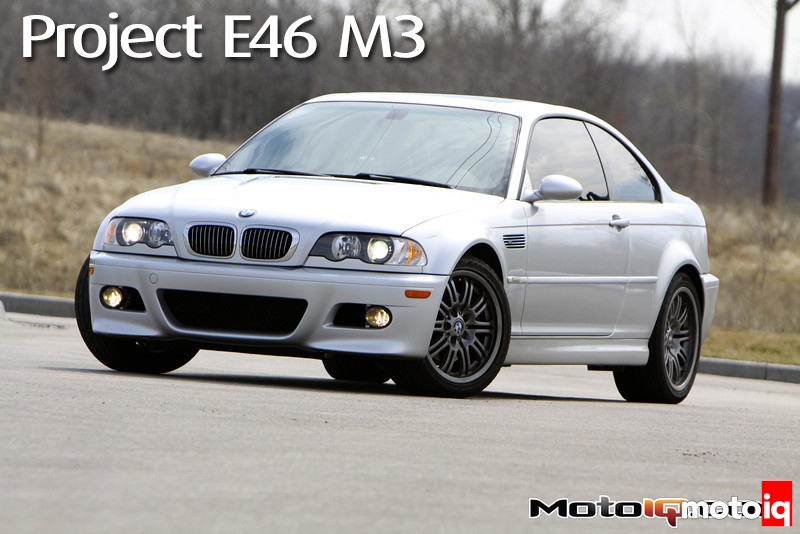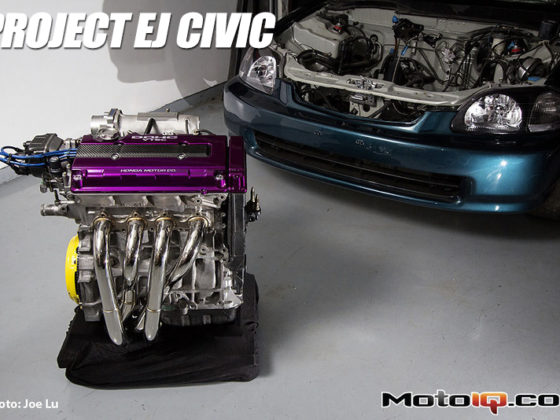Project E46 M3: Part 1 – Dyno and Acceleration Testing – Can We Hit 300 WHP?
by Pablo Mazlumian
The E46 M3 is a dream car for many enthusiasts. It's fast, has got great handling, and brakes well. It also sports great looks inside and out, is now more affordable, and also is even fairly economical (for a sports car). Lastly, it's got good aftermarket support. Find out how our initial dyno and acceleration tests go on pages 3 and 4.
While I'm familiar and uber excited about my little turbo Supra project, I've always been an M3 guy as well. Having owned five (four E36s and this E46) over the last 16 years, including a 550whp turbo E36 I used to time-trial, it's the car I most closely identify with.
Thanks to the E46's 3.2-liter inline six's ability to rev past 8000 rpm, our first power quest—and I even wrote this before any dyno testing—will be to hit 300 whp. If accomplished today it would be impressive, considering we're only changing fluids and adding a Macht Schnell intake kit and Epic Motorsports software.
With more basic bolt-ons planned in the near future, we'll hope to exceed 320 whp before getting into forced induction. That's 100 whp/liter—a feat that's shared only by the likes of highly tuned exotics like the GT3 RS, F430 Scuderia and F458 Italia. Okay, I suppose you can count a modified S2000 or Integra Type R but, while still very impressive (and I love both), those are much smaller engines and easier to get revs out of.
Before we get into any testing, let's talk about this actual car. I picked it up locally in the KC area as a one-owner car in great shape, with only 46k miles. But these cars have a couple of inherent issues, three of which this car was no stranger to. First, the C-pillar upholstery was coming apart. Fortunately, it's a cheap $45-per-side fix from Bavarian Autosport—my OE BMW parts store for the past several years.
Second, the plastic, interior-door handles are starting to bubble and this, too, is a common problem. More on that later, but we'll be looking for a good, aftermarket alternative because an O.E. fix requires an $800 replacement of the entire section, per side.
Lastly, all of the early M3 models had a recall for a rod bearing issue. Fortunately, we verified this was fixed early on. Other than that, the car's great and pulls very strong.
 |
| Our Project M3 “tune-up” products include stock replacement NGK Iridium DCPR8EIX (stock heat range) and oxygen sensors from Sparkplugs.com. From Bavarian Autosport we ordered Liqui Moly engine oil, LM Engine Flush, LM Ceratec, LM “Valve Clean” and “Jectron” fuel additives, Redline 75w-140 gear oil (for the differential), Redline transmission fluid. Bav Auto also sells differential and tranny magnetic drain plugs to capture any small shavings in the casing, as well as a new O.E. carbon-activated cabin air filter, O.E. fuel filter and an O.E. replacement Mahle oil filter. |
When I start a project I like to start with the cleanest engine possible, as well as free up any lost horsepower due to friction or a lacking spark. First, I flush out the car's fluids and use nothing but the good stuff. I also start with new oil and fuel filters, flush out the engine oil with Liqui Moly Engine Flush detergent, and add Liqui Moly Ceratec—a friction and wear reducing engine additive—to protect the engine internals. These German-made products I also get from Bav Auto.
Sparkplugs.com has a plethora of plugs with the cheapest pricing I've seen. We'll be equipping this car with O.E. replacement NGK iridium DCPR8EIX plugs—the “8” being the stock heat range. Sparkplugs.com also has cheaper O.E. replacement 02 sensors, which we didn't end up installing due to time constraints but will soon when replacing headers.
Before we perform this so-called engine tune-up, we'll need to establish a baseline to see how much the tune-up helped.
 |
| The Macht Schnell intake (left) is inexpensive and a 10-minute install. It features MS' own replacement air filter and a 90-degree silicon elbow that replaces the factory accordion piece (upper right). The latter is known to create air turbulence and rob horsepower. It's also evident it has a sharper bend, which isn't optimal for airflow. As a result, several World Challenge series-type professional race BMWs use these silicone boots. |
 |
| I'm also excited to be testing Epic Motorsports' software upgrade. Epic works in conjunction with Bimmerworld—those guys you see racing on TV who just captured a second-place finish at the 24 hours of Daytona. Epic and BimmerWorld have tested nearly everything BMW, and bringing them onboard will surely maximize our project's performance potential. |
 |
| Before we start testing, there were some things needing attention. First, we installed a new carbon-activated cabin filter from Bavarian Autosport to remove any interior odors. It was a simple, 2-minute install. Simply hand-loosen the three spring loaded screws holding down the cover, and the old filter pops right out. |




